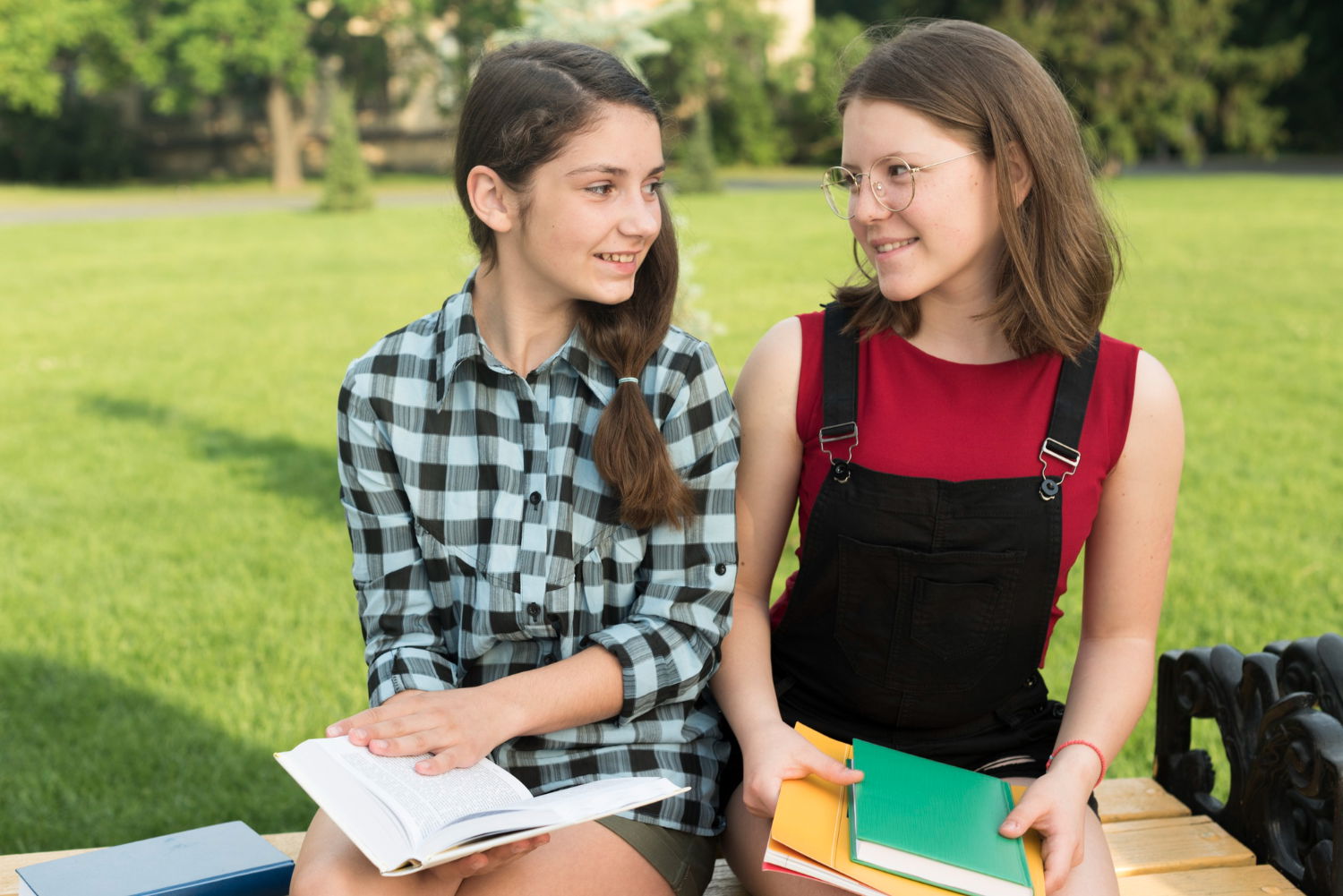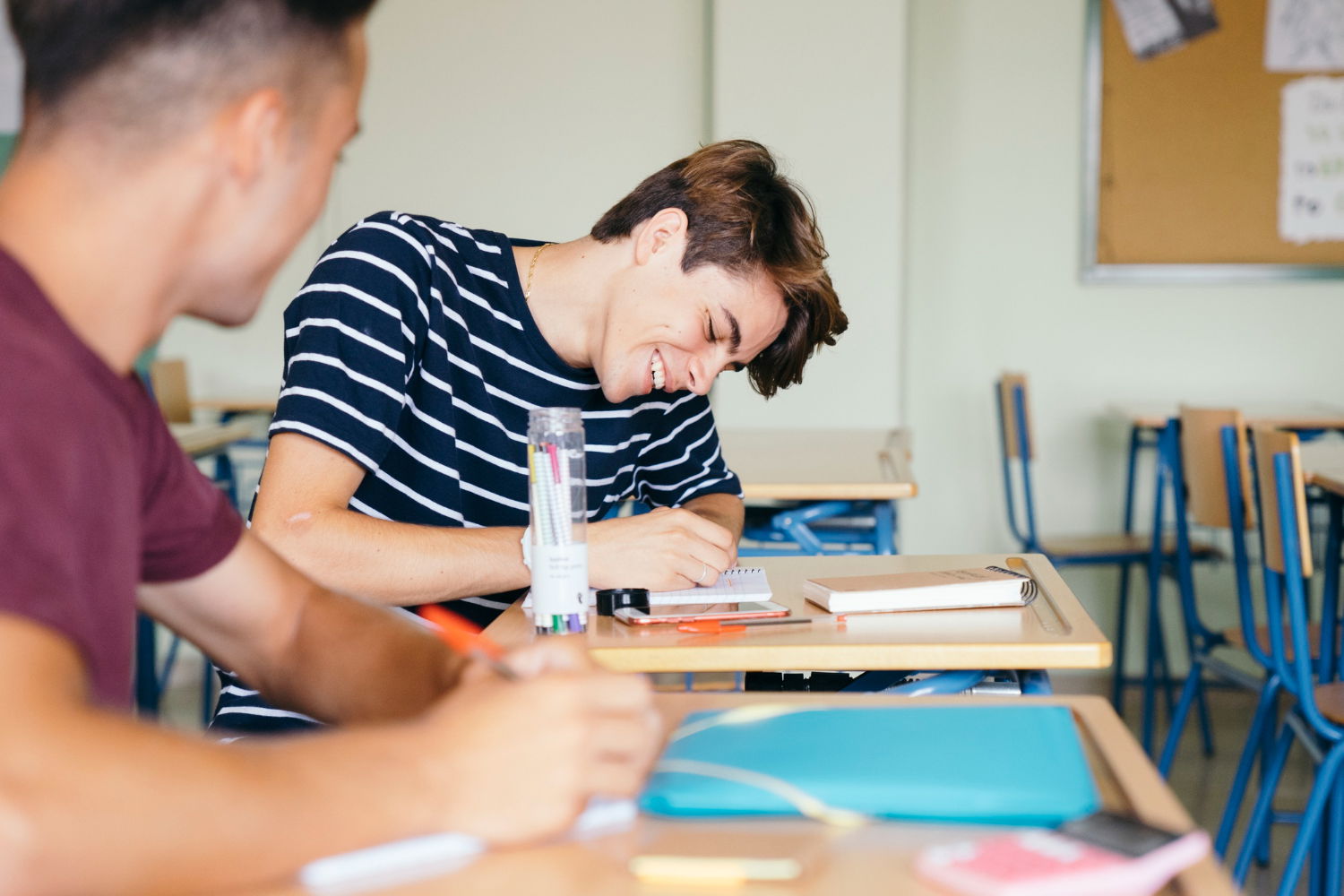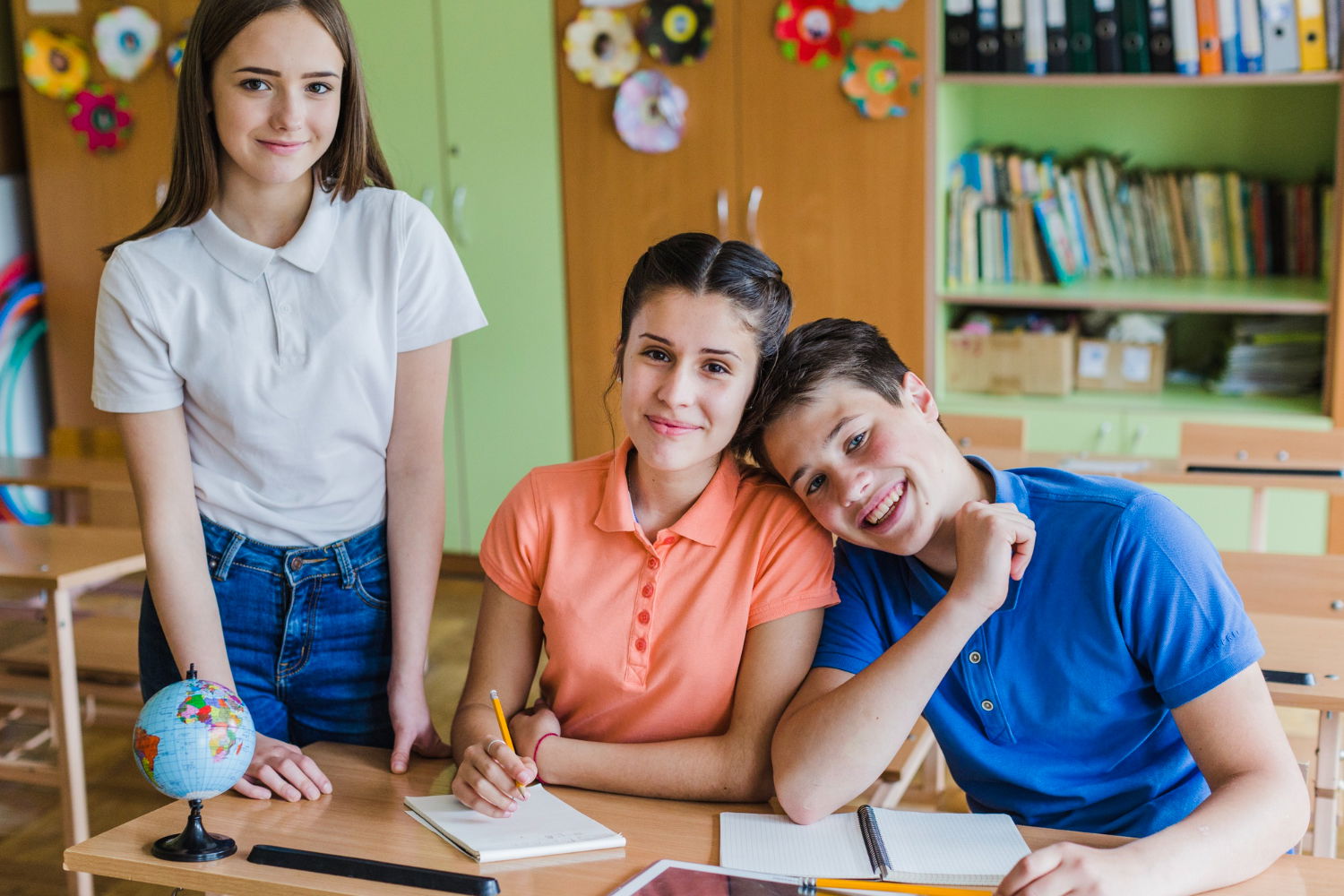The Complete Guide to the Six Global Contexts in the IB MYP

Global learning feels more meaningful when students understand why a topic matters beyond the classroom. This is precisely what the IB MYP Global Contexts aim to achieve. They help students connect subject content to the real world through themes that feel relevant, purposeful, and grounded in everyday life. Instead of focusing only on facts and skills, students learn to explore ideas through themes that connect to the world around them. In this guide, you’ll find clear explanations of all six IB global contexts, and how they influence teaching and learning across the programme. You’ll also find practical examples and strategies tips to help teachers, students, and families use global contexts effectively.
Understanding Global Contexts in the MYP
What Are Global Contexts?
Global contexts are broad themes used throughout the Middle Years Programme to help students connect their learning to real-world settings. When learners explore a unit through a specific context, they begin answering essential questions about identity, community, innovation, time, fairness, or sustainability.
These contexts help students see the purpose behind learning. They support inquiry, encourage perspective-taking, and strengthen international mindedness, which is one of the core goals of the IB.
Why the IB Uses Global Contexts
Global contexts enable MYP students to explore meaningful themes across local, national, and international settings. They show learners why content matters beyond the classroom, how subjects connect to real issues, and how different perspectives shape the way people approach problems. By exploring these themes, students begin to understand what responsible global citizenship entails in everyday life.
They also act as a guide for teachers when designing lessons and assessments. As students encounter these contexts throughout a unit, they develop curiosity, empathy, and more open-minded thinking, which in turn strengthens both their academic growth and personal development.
How Global Contexts Shape Learning in the MYP
Global contexts play a central role in MYP unit planning. Each unit selects one context to guide inquiry and connect subject content to meaningful real-world issues. When teachers use them thoughtfully, lessons become more engaging, cross-subject links feel stronger, and students gain a clearer sense of purpose in their work. They also start to reflect more naturally on global themes and shared responsibilities.
Schools may approach global contexts differently, but the most effective practice involves revisiting the chosen context throughout the unit, rather than merely mentioning it at the beginning. This ongoing focus helps students recognise how concepts and skills link to wider world events, personal experiences, and the communities they’re part of.
By weaving global contexts into each unit, the MYP provides learning with a clear purpose and demonstrates to students how their work connects to broader global themes.

The Six Global Contexts Explained
Each global context provides a different way of looking at learning. Below you will find clear explanations and examples to help students, teachers, and parents understand what each one means and how it can shape classroom learning.
1. Identities and Relationships
This context focuses on who we are as individuals and how we connect with others, helping students explore their beliefs, values, well-being, friendships, cultures, and the concept of being human.
Teachers can use it across subjects, whether students are writing personal narratives in Language and Literature, exploring emotional well-being in Physical and Health Education, designing community campaigns in Design, or analysing social identity in Individuals and Societies. Overall, this context encourages empathy, self-awareness, and a deeper appreciation of the communities we belong to.
2. Orientation in Space and Time
This context focuses on the meaning of place and time, guiding students to explore cultures, histories, major human milestones, origins, and the development of civilisations. Through activities such as investigating migration patterns, studying geological time scales, tracing artistic movements, or researching local heritage for a Personal Project, learners build stronger global awareness and a deeper sense of historical perspective.
3. Personal and Cultural Expression
This context focuses on creativity and the many ways people express ideas, emotions, culture, and beliefs. Although it’s closely connected to the arts, it can be explored in every subject through work such as photography exhibitions, poetry in a second language, culturally inspired product designs, or activities that highlight creative communication. It encourages students to see creativity as a shared human experience that brings people and perspectives together.
4. Scientific and Technical Innovation
This context explores how people make sense of the world through science and technology, encouraging students to investigate natural systems, analyse data, develop practical solutions, and consider how innovations shape communities.
Whether they study renewable energy in Science, work with real-world data in Mathematics, design useful digital tools, or explore the effects of inventions in Individuals and Societies, students learn to appreciate the benefits of innovation while recognising the responsibilities that come with it.
5. Globalization and Sustainability
This context examines the connections between systems and communities, encouraging students to explore the interrelationships among environmental, economic, political, and social factors while developing sustainable decision-making skills. In practice, they study climate change in Science, analyse economic structures in Individuals and Societies, create eco-friendly prototypes in Design, or interpret environmental data in Mathematics. Through these activities, students begin to think carefully about the balance between human progress and the responsibility to protect the planet.
6. Fairness and Development
This context focuses on themes such as equality, rights, responsibility, and how resources are shared, prompting students to explore ethical issues and global justice through activities like studying human rights movements, creating awareness materials, organising meaningful Service as Action projects, or analysing inequality with mathematical tools, all of which help them grow as thoughtful global citizens who recognise the impact of shared humanity.
The six global contexts provide students with purposeful ways to explore ideas, linking classroom learning to broader themes and real-world experiences.
Need help with the MYP?
How Teachers and Students Use Global Contexts
It is essential to understand how teachers and students actively use global contexts to shape inquiry, guide lessons, and give learning a clear sense of purpose.
Choosing the Right Global Context for a Unit
Teachers select a global context that best supports the purpose of a unit. They consider the concepts, skills, and content involved, then decide which context will make learning clearer and more meaningful. A helpful approach is to:
- Start with the subject concepts to clarify the core ideas of the unit.
- Identify what real-world issues relate to them so the learning feels relevant and grounded.
- Select a context that creates strong inquiry questions that guide students’ thinking.
- Choose an exploration that fits the unit aims and supports meaningful classroom activities.
This process ensures that the context enhances learning rather than distracts from it.
Integrating Global Contexts Into Inquiry and Assessment
The strongest MYP classrooms revisit the global context often, weaving it into discussions, activities, reflections, and assessments so students can explain its influence, link content to real situations, consider local and global issues, and use it to strengthen their conceptual thinking, with tasks like presentations, investigations, essays, or design briefs reinforcing these connections throughout the unit. This steady integration helps students see the context as an active part of learning rather than something mentioned briefly at the start.
Examples Across Different Subject Areas
Below are ways global contexts appear in everyday classroom situations across subjects. Examples include:
- Science. Analysing ecological footprints through the lens of sustainability.
- Mathematics. Exploring population growth models linked to fairness and development.
- Arts. Creating installations that express cultural identity.
- Individuals and Societies. Examining urbanisation through the lens of globalisation.
- Design. Developing assistive technology for communities.
- Language and Literature. Studying how authors express identity through narrative voice.
Global contexts make subject learning richer, more focused, and more interconnected. When both teachers and students engage with global contexts throughout a unit, learning becomes more meaningful, connected, and rooted in real-world relevance.
Why Global Contexts Matter in IB Education
Global contexts support international mindedness. They provide students with tools to understand complex problems and encourage them to consider other perspectives. They also prepare students for future IB pathways, including the Diploma Programme, by reinforcing inquiry, reflection, and critical thinking.
Students experience learning that feels purposeful. Teachers gain a structured way to plan meaningful units. Families also see how schoolwork connects to real life, which can support motivation and confidence.

Practical Tips for Success
Here we bring together straightforward guidance that helps students, teachers, and parents make better use of global context learning.
For Students – Making Global Contexts Personal
Students gain more from their learning when they use global contexts to guide their thinking, especially when they make clear links to their own experiences, current events, class reflections, and personal notes or journals.
These simple habits help them build stronger inquiry skills and engage with ideas on a deeper, more meaningful level. This approach also encourages students to take more ownership of their learning as they recognise how each context relates to their everyday life.
For Teachers – Bringing Contexts to Life in Lessons
Teachers can create richer and more engaging units when they regularly weave the global context into their lessons. This might include opening the unit with a clear explanation of the chosen context, using real-world case studies to ground abstract ideas, referring to the context during discussions and assessments, and coordinating with colleagues to ensure consistent approaches across subjects.
When these practices are incorporated into everyday teaching, students start to view the global context as a meaningful guide for learning, rather than a mere label.
For Parents – Supporting Context-Based Learning at Home
Parents play a key part in helping students see how school learning connects to the wider world, whether by talking about news stories linked to global themes, asking their child to explain how a topic relates to real life, offering books or documentaries that expand on these ideas, or simply encouraging curiosity about local and global issues, all of which make learning feel richer and more meaningful beyond the classroom.
With these simple approaches in place, students are better equipped to grow their skills and link classroom learning to meaningful global ideas.
Common Challenges and How to Overcome Them
Common challenges with global contexts often appear when students or teachers struggle to connect them meaningfully to everyday learning.
Making Contexts More Than Just Labels
Some students may see global contexts as simple headings. Teachers can address this by revisiting the context often and connecting activities directly to it. Glossaries, classroom posters, and examples also help. Adding short reflections at the end of each lesson can also reinforce how the context shapes the learning. Over time, students begin to recognise the context as an active part of the unit rather than a label.
Ensuring Consistency Across Subjects
Schools sometimes face variation in how global contexts are used. Collaboration among teachers and supportive planning tools can ensure smoother alignment across subjects and year groups. Clear expectations from coordinators also help create consistency. Regular reflection among teaching teams keeps the use of global contexts purposeful and aligned.
Helping Students Reflect on Global Themes
Reflection takes practice. Simple strategies like reflection journals, paired discussions, or end-of-unit reviews can help students develop stronger thinking habits. Encouraging them to use real examples supports deeper understanding. Regular check-ins during a unit also help students spot their own progress. In due course, these small habits build confidence and a clearer sense of how they learn.
By addressing these challenges early and consistently, schools can make global contexts clearer, more engaging, and easier for students to apply across subjects.
Bring Global Learning to Life!
When used with intention, global contexts help IB MYP tutors create classrooms where students explore meaningful themes and connect their learning to real experiences and global issues. This active approach nurtures curiosity, strengthens critical thinking, and builds confidence as students move through the programme.
With guidance from TutorsPlus, these contexts become even more powerful because students learn how to apply them across subjects and in everyday situations. Book a free trial by contacting us at +41 22 731 8148 or so we can support your child’s success in the IB Middle Years Programme.
Frequently Asked Questions (FAQ)
What are the six Global Contexts in the IB MYP?
They are Identities and Relationships, Personal and Cultural Expression, Orientation in Space and Time, Scientific and Technical Innovation, Fairness and Development, and Globalisation and Sustainability.
Why are Global Contexts important in the MYP?
They help students see the purpose of what they learn, link content to real-world issues, and strengthen international mindedness. They also build the habits of inquiry and reflection that the IB values across all programmes.
How do teachers use Global Contexts in lessons?
Teachers use them in unit planning, inquiry questions, class activities, assessments, and reflections throughout the learning cycle. This consistent use helps students recognise the context as an essential part of their learning, not an isolated idea.
How can students use Global Contexts effectively?
Students can reflect on how each context connects to their lives, current events, and subject content. These reflections help them deepen their understanding and make stronger links between what they study and the world around them.
What’s the difference between Global Contexts and subjects?
Subjects focus on disciplinary knowledge and skills. Global contexts provide a real-world angle that helps students see how that knowledge matters.
How can parents support Global Context learning?
Parents can discuss world events, encourage reflection on global issues, and show interest in how schoolwork connects to real life.
Are Global Contexts connected to the IB Learner Profile?
Yes. They support the development of attributes such as being open-minded, reflective, caring, and knowledgeable.
How do Global Contexts prepare students for the IB Diploma?
They build analytical thinking, global awareness, and conceptual understanding, which are essential for DP subjects and core components.















